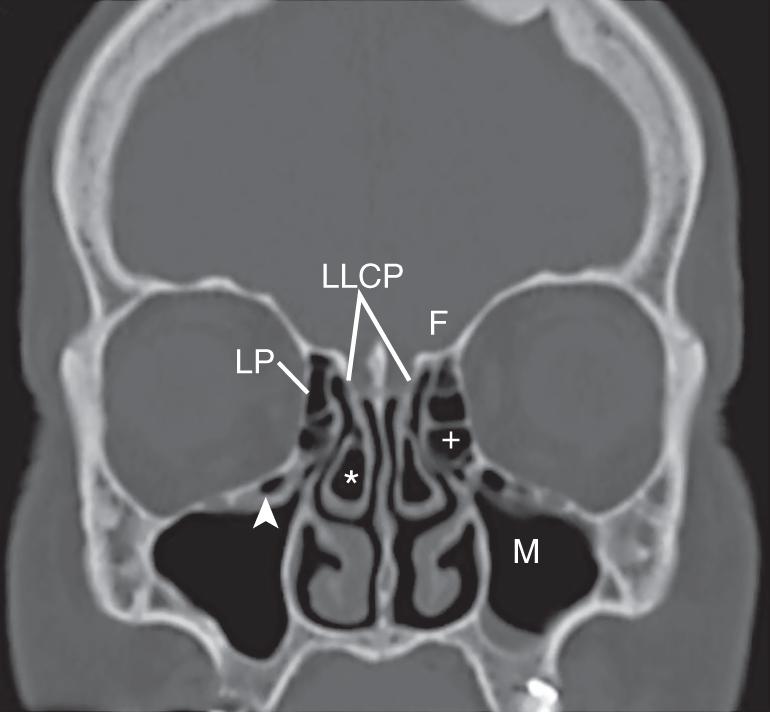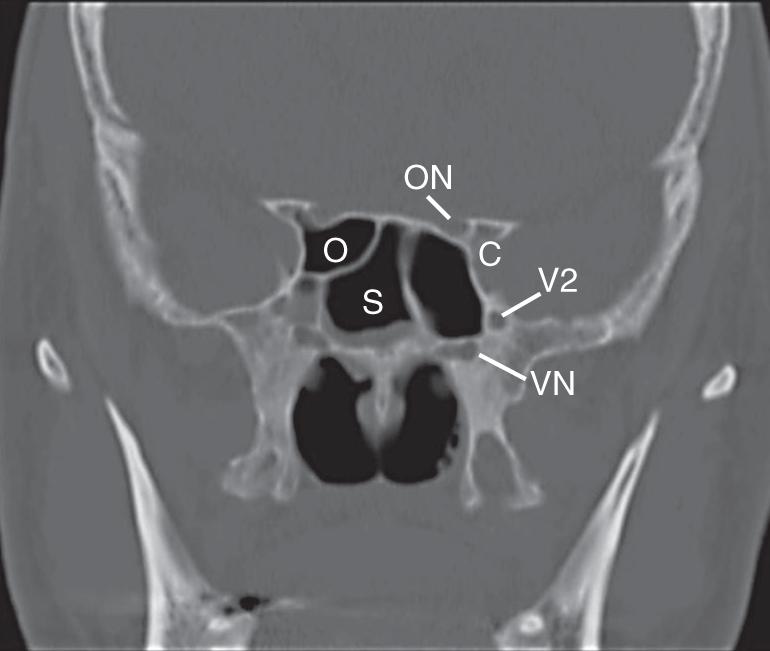Physical Address
304 North Cardinal St.
Dorchester Center, MA 02124
While there can be great variation in sinus anatomy, the drainage patterns of the sinuses are fairly consistent.
Embryologic patterns of pneumatization of the paranasal sinus lamellae aid in understanding of related anatomy.
The blood supply to the nose and sinuses originates from both internal and external carotid branches. Knowledge of the arterial blood supply to the nose and sinuses facilitates understanding how to avoid and treat bleeding during and following sinus surgery.
Diseases of the paranasal sinuses can extend hematogenously or via direct extension into adjacent structures.
The paranasal sinuses form as evaginations from the nasal cavity. The ethmoid and maxillary sinuses are present at birth, and all of the sinuses continue to develop postnatally, with the sphenoid and frontal sinuses developing last.
The osteomeatal unit (OMU) is a functional anatomic unit. Obstruction in this area can lead to anterior ethmoid and maxillary sinusitis and possibly frontal sinusitis.
CT with triplanar reconstruction is the preferred method for evaluating the sinuses radiographically.
Sinus disease can spread via vascular channels into the intracranial cavity and orbit.
The nasal septum is the midline partition that separates the left and right sides of the nasal cavity. It is composed of the quadrangular cartilage, perpendicular plate of the ethmoid bone, vomer, and maxillary crest. There are three paired turbinates, or concha , on each side. The middle and superior turbinates are part of the ethmoid bone, whereas the inferior turbinate is its own bone. Occasionally, a fourth paired turbinate, the supreme turbinate, is present.
The paranasal sinuses are pneumatized areas of the facial and skull base bones. They communicate with the nasal cavity through small ostia, allowing air exchange and drainage of secreted mucus.
The sinuses are lined by pseudostratified ciliated columnar or respiratory epithelium. Cilia beat in a coordinated fashion to transport mucus from the point of its secretion in the sinus toward its natural ostium. From there, cilia within the nasal cavity move the secretions toward the nasopharynx. A portion of the nasal cavity near the superior turbinates and superior portion of the septum is lined with olfactory neuroepithelia.
A number of theories exist about the possible function of the sinuses, including decreasing the mass of the skull, enhancing vocal resonance, absorption of mechanical force during trauma in order to protect the orbits and brain, and production of a reservoir for nitric oxide, a postulated aerocrine substance that may regulate pulmonary function. There is evidence for and against all of these theories.
The maxillary sinus is located within the body of the maxilla. Medially it is bounded by the lateral nasal wall, superiorly by the floor of the orbit (containing the infraorbital nerve and artery), posteriorly by the pterygopalatine and infratemporal fossae, and inferiorly by the alveolar process and hard palate. Maxillary tooth roots commonly reach to the floor of the maxillary sinus ( Fig. 23.1 ).

The ethmoid sinuses form a lattice-like series of cells medial to the orbits and inferior to the anterior cranial base. They are functionally divided into the anterior and posterior ethmoid cells by a portion of the middle turbinate termed the basal lamella. The anterior ethmoid cells are bounded medially by the middle turbinate and drain into the middle meatus. The posterior ethmoid cells are bounded medially by the superior turbinate and drain into the superior meatus. The ethmoid cells are bounded laterally by the lamina papyracea of the orbit. Posterior to the posterior ethmoid cells are the sphenoid face and sphenoid bone containing the sphenoid sinus. The nasal cavity is inferior to the ethmoid air cells and the frontal bone and skull base are superior. As the ethmoid cells form embryologically, they expand into the frontal bone superiorly and make shallow depressions in it, called fovea ethmoidalis. The frontal bone abuts the cribriform plate of the ethmoid medially, and a small portion of the cribriform plate sits superior to the ethmoid cells. This area tends to be very thin and easily injured during sinus surgery, which can lead to a cerebrospinal fluid leak.
The sphenoid sinus pneumatizes the sphenoid bone and is posterior to the ethmoid sinus. The sella turcica and pituitary gland lie superior to the sphenoid sinus. The optic nerve lies within the lateral wall of the sphenoid sinus. The venous cavernous sinus, near the sphenoid sinus, contains the internal carotid artery and cranial nerves III, IV, V 1 , V 2 , and VI. Posterior to the sphenoid sinus is the posterior cranial fossa ( Fig. 23.2 ). The sphenoid sinus can pneumatize laterally into the pterygoid region of the sphenoid and thus lies inferior to the temporal lobes of the brain.

The frontal sinuses are air spaces within the frontal bones. The frontal bone thus has an anterior wall and a posterior wall, which are referred to as tables. The anterior table lies deep to the forehead skin. The frontal lobes of the brain lie posterior to the frontal sinus.
Become a Clinical Tree membership for Full access and enjoy Unlimited articles
If you are a member. Log in here